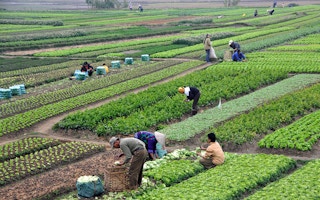Young people growing up in rural Africa need jobs where they live, so they are not forced to join the growing ranks of poor seeking work in cities or to make dangerous journeys to reach Europe, the United Nations’ food agency said on Monday.
By 2030, there will be about 1.3 billion 15 to 24 year olds on the planet, some 100 million more than in 2015.
Most of that increase will be in rural areas of sub-Saharan Africa, the U.N. Food and Agriculture Organization (FAO) said at the launch of its annual State of Food and Agriculture report.
Industrial and service sectors in African and South Asian cities have not grown enough to meet the demand, and won’t absorb the millions of new job seekers wanting to escape grinding poverty and hunger in their rural homes, FAO said.
“
People can get out of poverty even if they stay in rural areas.
Marco Sanchez-Cantillo, acting director, Agricultural Development Economics Division, FAO
“In Africa, every year 10 to 12 million youths join the labour force, but we have only been providing about 3 million jobs … So it is not a surprise that they try to cross the desert and the Mediterranean looking for a better opportunity,” said FAO director-general José Graziano da Silva.
Rural areas are not doomed to be poverty traps and could thrive with more investment in farming and food industries and better infrastructure linking farms and rural businesses to meet the rising demand for food in cities, the report said.
“People can get out of poverty even if they stay in rural areas,” said Marco Sanchez-Cantillo, acting director of FAO’s Agricultural Development Economics Division.
“There are parts of the world where rural transformations have lifted hundreds of millions of people out of poverty,” he told the Thomson Reuters Foundation.
Countries in East and Southeast Asia have been able to boost incomes in both cities and the countryside in the past 20 years.
“In Vietnam most of the rural poor have exited poverty while staying in rural areas … Latin America has many examples too,” he said.
As urban populations grow, so will their demand for food, so farmers need to produce more at a time when climate change is bringing erratic rains and affecting crops in many parts of the world, the U.N. agency said.
Currently 80 percent of food in sub-Saharan Africa and Asia is produced by small-scale farmers, according to FAO.
With the right kind of investment in rural infrastructure and farming, young people could find jobs on farms but also in food processing, transport and storage.
In June, several African governments pledged to restore degraded land, invest in agriculture and create “green jobs” for young people in a drive to reduce unemployment, fight radicalisation, and stem the tide of migration to Europe.
This story was published with permission from Thomson Reuters Foundation, the charitable arm of Thomson Reuters, that covers humanitarian news, women’s rights, trafficking, property rights, climate change and resilience. Visit http://news.trust.org)

















